|
The original Can Am series began in 1966. It was based on a set of rules that allowed for technological innovation. However, this technical
freedom resulted in escalating costs which contributed to the demise of the series in 1974.
However, there was still a demand for Can Am cars from fans and promoters and the series was revived in 1977. The new rules were not as liberal
as the original series. The second generation Can Am cars were based mainly on the former Formula 5000 category and under 2-liter sports racers.
But the revived series also ran its course and ended in 1986. Many of the well-established and funded Can Am teams transitioned to the CART and IMSA series.
This resulted in low car counts and a general lack of interest in the series. The final season consisted of four races - two at Mosport and the
others were at Summit Point and St. Louis. The first race of the last season took place in June at Mosport. Below are images from this event.
|
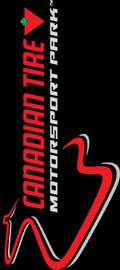
|
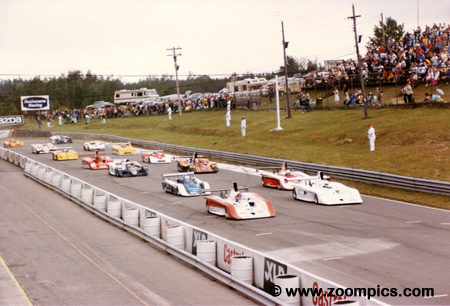
|
On the front row was Horst Kroll in No. 36 Frissbee KR3. Qualifying second, over 1.5-seconds slower, was Al Lamb in a Frissbee GR2.
Fastest of the under 2-liter cars was Jeremy Hill in Photon JH2. In total, there were fifteen starters. Pre-season 'hype' suggested that there would be twenty-five entries for the June event and an additional
fifteen for the September race.
|
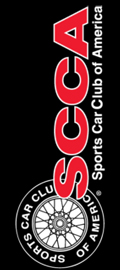
|
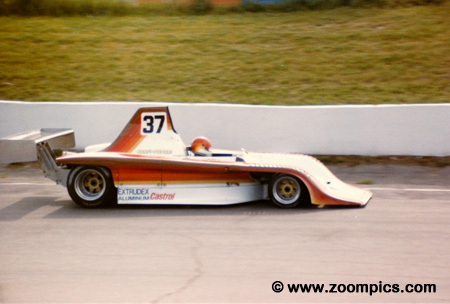
|
Mosport veteran, Horst Kroll won round one of the 1986 Can Am Championship. He would never finish any worse than sixth during the season.
It seemed only fitting that Kroll would win the final championship. He had competed in seventy races since the series was revived
10-years earlier.
|

|
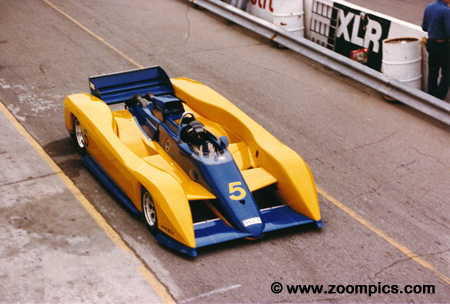
|
Lou Sell, the 1968 SCCA Formula A champion, debuted a re-bodied March 85C that was driven by Michael Andretti in the CART series.
The former CART cars took advantage of 6-liter engines and Indy chassis technology. Problems during qualifying forced Sell to start at the back. During the race engine problems developed
causing him to complete only thirty-two of the scheduled forty-five lap event.
|

|
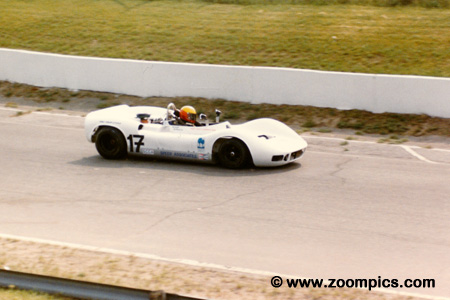
|
What appears to be a mid-60s McLaren M1B is a converted Formula Atlantic March powered by a Mazda 13B Rotary engine.
This car raced by Sean Burgess was called March RX10-B Mazda. Burgess qualified twelfth but did not finish.
At the second Mosport race in September, he would fare much better finishing sixth overall.
|

|
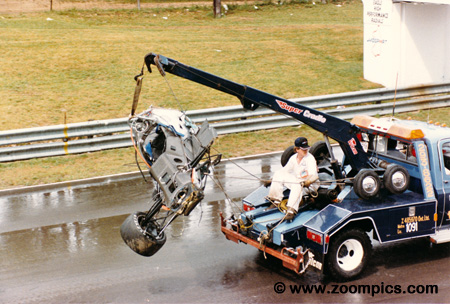
|
On the fifth lap, a mechanical failure on Frank Chiannelliís converted March caused him to go over the guardrail on Mosportís very fast back straight.
The back half of the car - engine and rear suspension - separated from the tub. Chiannelli was stiff after the accident but uninjured.
Not sure if the racing adage - "A bad day at the track is better than a good day at work" - applies here.
|

|
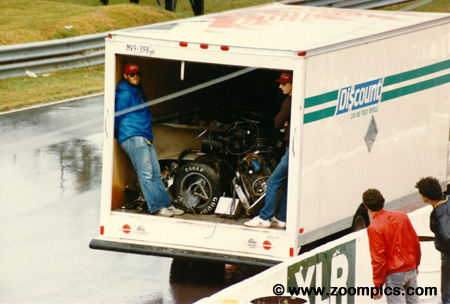
|
The damage to the guardrail caused by Chiannelliís accident resulted in a 90-minute delay. This stoppage also allowed
competitors to change to rain tires as there was a sudden downpour. These factors contributed to the race being reduced
from sixty to forty-five laps.
|

|
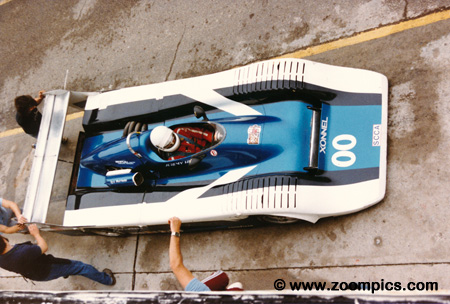
|
Jeremy Hill converted his Formula Atlantic March 78 to Can Am specifications and called the car a Photon JH2.
The quickest of the 2-liter cars Hill would finish fifth overall. He finished fourth overall in the 1986
championship behind Kroll, Bill Tempero and fellow 2-liter competitor Mauro Lanaro.
|

|
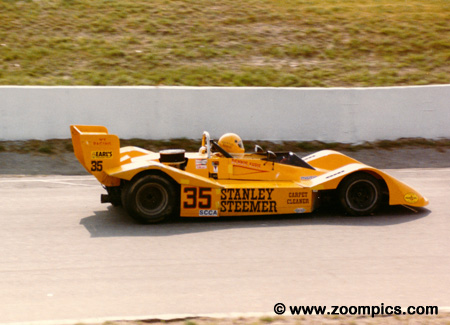
|
Dennis Ehrie competed in a converted Brabham BT-40 powered by a Mazda Rotary. Ehrie started at the back of the field
but as the result of attrition finished sixth overall. While never the fastest, the carís reliability and his consistency meant
Ehrie never finished any worse than tenth place.
|

|
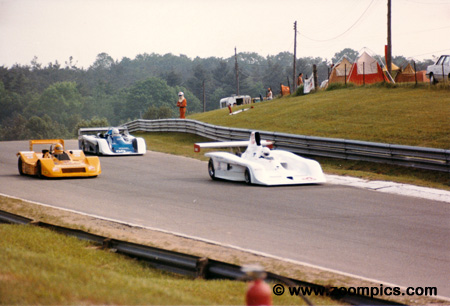
|
Cresting the hill at corner two is second quickest qualifier Al Lamb in a Frissbee GR2. Lamb was a former Super Vee competitor who drove
the car used by Rick Miaskiewcz to capture the 1985 Can Am Championship. He is followed by Dennis
Ehrie in the No. 35 Stanley Steemer and the Photon of Jeremy Hill.
|

|
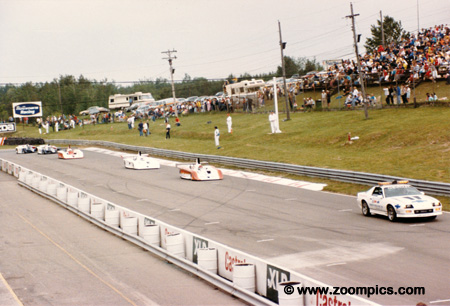
|
The field lines up single file after the Chiannelli accident. After the 90-minute delay for rain and guardrail repairs, another
incident would occur on the restart. The differential on Al Lambís Frissbee failed, causing him to crash which resulted in
another caution period.
|

|
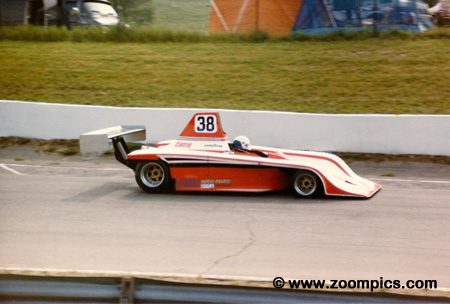
|
Bill Adam, an experienced Canadian racer, qualified the Horst Krollís spare Frissbee fourth.
With the race nearing its conclusion Adam appeared to be headed for a win in his first Can Am start.
Unfortunately, a combination of deteriorating rain tires on a drying track forced him to surrender the lead on the last lap.
Despite this problem, he held on for a second-place finish.
|

| POS. | CLASS | DRIVERS | CAR | ENTRANT | LAPS | RETIREMENTS |
| 1 | - | Horst Kroll | Frissbee KR3 | Horst Kroll Racing | 45 | - |
| 2 | - | Bill Adams | Frissbee KR4 | Horst Kroll Racing | 45 | - |
| 3 | U2L | Mauro Lanaro | March 832 | LM Scuderia | 43 | - |
| 4 | - | John Macaluso | Lola T332 | - | 42 | - |
| 5 | U2L | Jeremy Hill | Photon JH2 | Texas Microdune | 42 | - |
| 6 | U2L | Dennis Ehrie | Wise | Stanley Steamer | 38 | - |
| 7 | - | Lou Sell | March 85C | Dennis Lyman Racing | 32 | Engine |
| 8 | - | Bill Tempero | March 85C | Stanley Streamer | 30 | Differential |
| 9 | U2L | Randy Zimmer | Rodel M1 | - | 27 | Engine |
| 10 | - | Al Lamb | Frissbee GR2 | Texas American | 22 | Accident |
| 11 | - | Phil Compton | Watson 82 | Texas American | 21 | Engine |
| 12 | - | John Graham | Frissbee KR5 | - | 6 | Halfshaft |
| 13 | - | Frank Chianelli | March 84C | Chianelli Racing | 4 | Accident |
| 14 | U2L | Sean Burgess | March 832 | Rolar/Speed | 2 | - |
| 15 | U2L | Dave Locke | Cicale-March | Al Lamb Racing | 1 | Gearbox |
| DNS | U2L | Cliff Dawson | March 832 | Lockesporte | 0 | Accident |
|
Copyright Notice:
|
All content (photographs and text) appearing on this website are the exclusive property of © www.zoompics.com and are protected under International copyright laws. The subject matter on this website may not be reproduced, copied, stored or manipulated.
|
© Copyright 1999, 2000, 2001, 2002, 2003, 2004, 2005, 2006, 2007, 2008, 2009, 2010, 2011, 2012, 2013, 2014, 2015, 2016 and 2017


